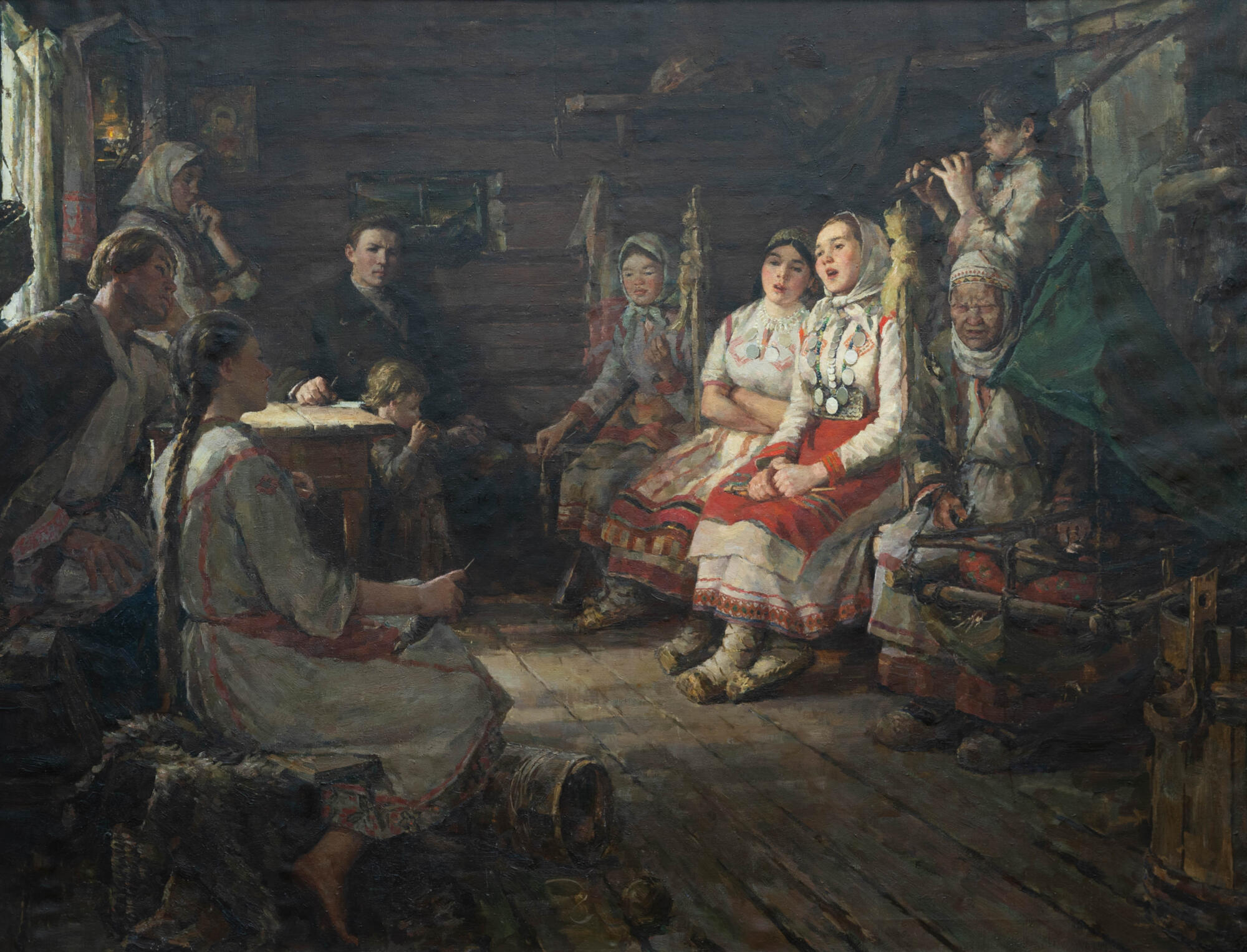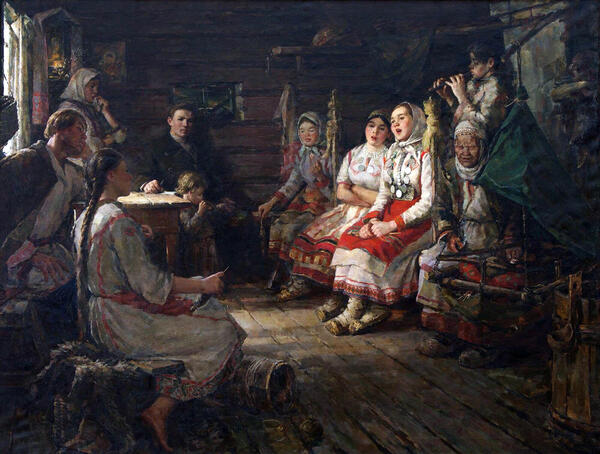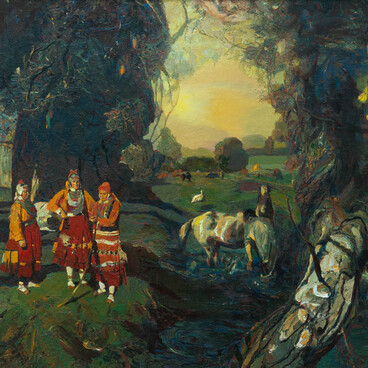The work of Pyotr Gavrilovich Kiparisov, displayed at the museum, is the artist’s copy of his graduation work that he presented in 1955 at the Repin Institute of Painting, Sculpture and Architecture, while the original is housed in the permanent exhibition of the Research Museum of the Russian Academy of Arts.
The plot for the painting was inspired by a joyous occasion in the artist’s life. Once he was invited to the house of his acquaintance, who resided in a small Chuvash village in Siberia. According to tradition, as an honored guest, Kiparisov was seated under the icons, and after a while, the house began to fill with elderly and young women. Wearing white dresses with national patterns, they sat on the benches and sang songs about the difficult path of the Chuvash people. The artist was so impressed by what he saw and heard that he wanted to render everything in painting and express the very essence of the Chuvash song. That was how the first sketch of the painting came to be. Later, the classic of Chuvash poetry, Konstantin Ivanov, was also added to the composition.
The artist recalled that while working on sketches, he wallpapered a corner of his workshop and painted a log wall over it. Against this background, he painted women in national clothes, posing in necessary positions. However, after failing to achieve the convincing look of the “wooden wall”, he completed a whole series of sketches from nature, and each of them had its own artistic value.
It is especially true about two of his sketches called “Girl with a Cradle” and “Blind Elderly Woman”, which are very expressive, as well as a lot of drawings (“Konstantin Ivanov and a Child”, “Spinstress”).
The picture stands out with its warmth, spiritual depth, as well as remarkable pictorial and figurative traits. Following the best traditions of academism, the artist masterfully arranges the interior composition, including ten characters — all of different ages, each with their unique personality and appearance — as well as simple peasant furniture and household items.
The center of interest in the painting is the figure of Konstantin Ivanov, who is seated as an honored guest. His sad countenance, illuminated by soft sunlight, expresses deep thought. Perhaps, at that very moment, he came up with the idea for his poem “Narspi”.
The plot for the painting was inspired by a joyous occasion in the artist’s life. Once he was invited to the house of his acquaintance, who resided in a small Chuvash village in Siberia. According to tradition, as an honored guest, Kiparisov was seated under the icons, and after a while, the house began to fill with elderly and young women. Wearing white dresses with national patterns, they sat on the benches and sang songs about the difficult path of the Chuvash people. The artist was so impressed by what he saw and heard that he wanted to render everything in painting and express the very essence of the Chuvash song. That was how the first sketch of the painting came to be. Later, the classic of Chuvash poetry, Konstantin Ivanov, was also added to the composition.
The artist recalled that while working on sketches, he wallpapered a corner of his workshop and painted a log wall over it. Against this background, he painted women in national clothes, posing in necessary positions. However, after failing to achieve the convincing look of the “wooden wall”, he completed a whole series of sketches from nature, and each of them had its own artistic value.
It is especially true about two of his sketches called “Girl with a Cradle” and “Blind Elderly Woman”, which are very expressive, as well as a lot of drawings (“Konstantin Ivanov and a Child”, “Spinstress”).
The picture stands out with its warmth, spiritual depth, as well as remarkable pictorial and figurative traits. Following the best traditions of academism, the artist masterfully arranges the interior composition, including ten characters — all of different ages, each with their unique personality and appearance — as well as simple peasant furniture and household items.
The center of interest in the painting is the figure of Konstantin Ivanov, who is seated as an honored guest. His sad countenance, illuminated by soft sunlight, expresses deep thought. Perhaps, at that very moment, he came up with the idea for his poem “Narspi”.



